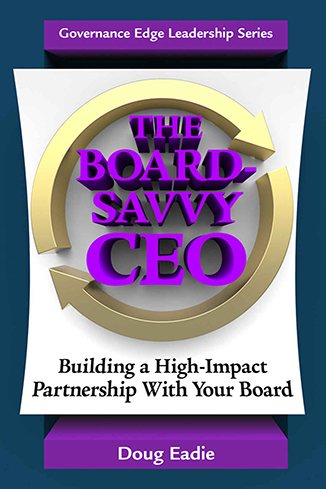The following article is excerpted from Doug Eadie and Dave Stackrow’s forthcoming book, Becoming Your Board’s Chief Governing Partner: a Practical Guidebook for Transit CEOs and CEO-aspirants.
In our travels around the country these days, we see an increasing number of new-style public and nonprofit sector chief executives, including many in the transit industry, who you won’t find astride the fire wall vigilantly guarding against incursions by micro-managing board members. This emerging new model of CEO leadership in the governing arena, which has no doubt emerged in reaction to the bankruptcy of the traditional view, sees the chief executive as a hybrid position: part board member/part executive – a governing partner rather than merely a supporter of the board’s governing work, who basically crafts documents that supply board members with information to make decisions. If you ask the new-model CEO to tell you about her role in governing, she’d sound something like this:
My board members and I are in the governing game together, and we really do work as a team in getting the key governing decisions made, which involves spending hours around the same table. The governing function is mine as well as my board’s; it’s absolutely shared territory. My board members are an incredibly rich resource to draw on in governing our authority, bringing diverse experience, expertise, perspectives, and connections to the game. My job as CEO is to capitalize on my board as a precious asset in getting governing work done, and I also need to make sure that they aren’t treated like an audience but that they actually play an active role in shaping – not just making – the really critical governing decisions. Otherwise, I’ll be stuck with some dangerously unhappy campers who will be tempted to take out their frustrations on me. Among other things, this means I’ve got to play an active role in helping my board become a more effective governing organizations, with a clearer role and well-designed governing structure and processes.
Many of our readers are probably aware that an increasing number of non-profit CEOs are becoming board members themselves, sometimes with a vote, more often not. This trend reflects the current view of the CEO as an active partner in the governing process. Many of you are no doubt also aware in the for-profit corporate sector, the CEO is not only always a full-fledged board member, but also more often than not actually chairs the board (hence, the common title “chairman and chief executive officer”). Even though we seriously doubt that transit boards around the country will include CEOs anytime soon, we are 100 percent certain, based on our experience, that transit CEOs who grow beyond the old-fashioned we-they dichotomy and see themselves as occupying a hybrid board-executive position will be more effective than their more narrowly focused peers.






